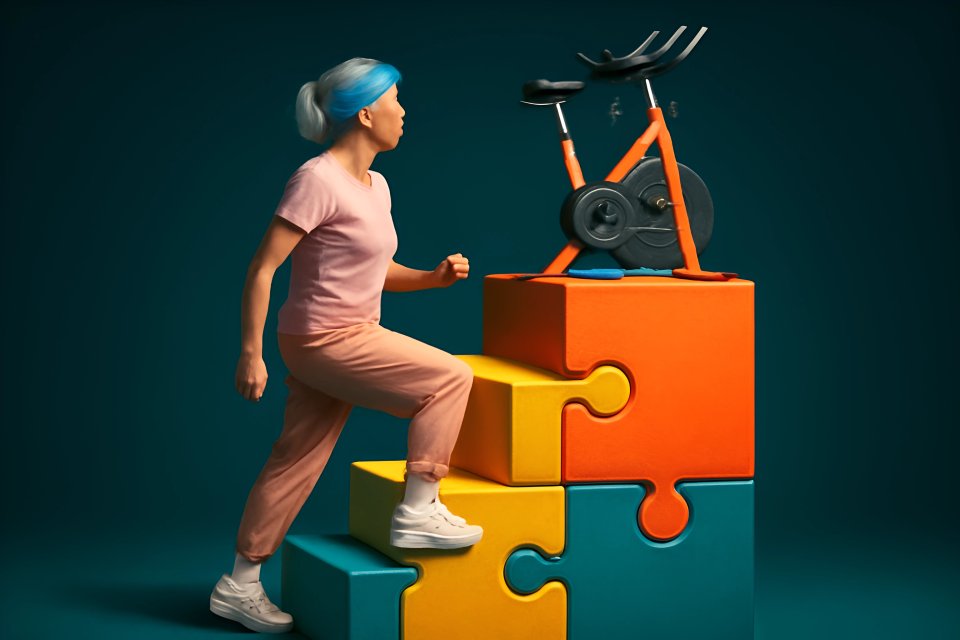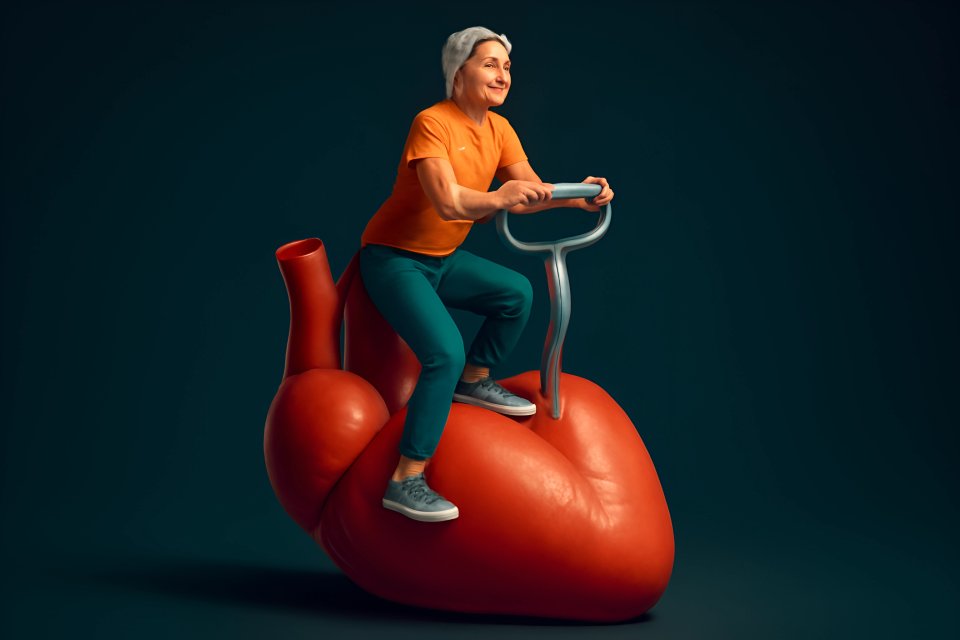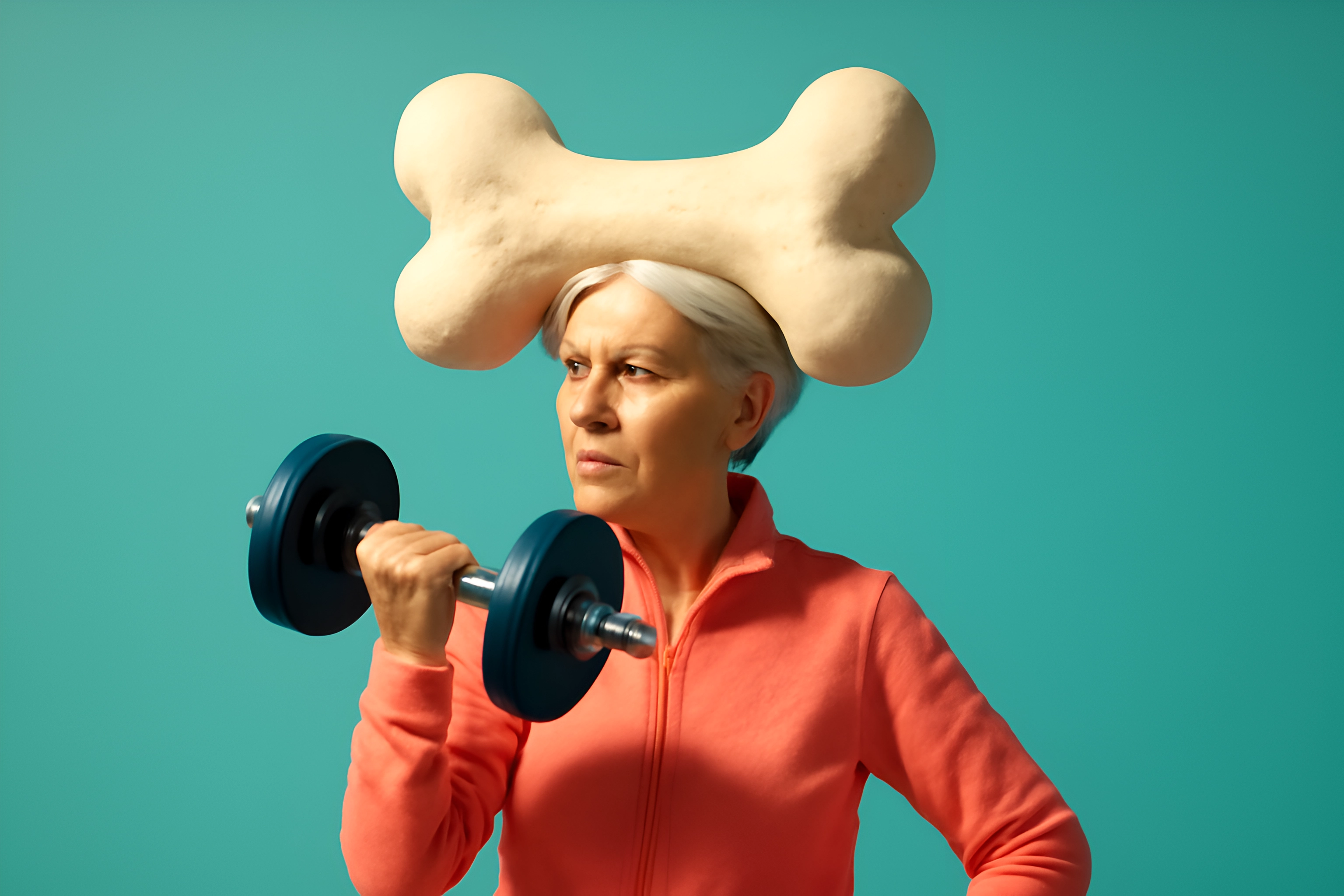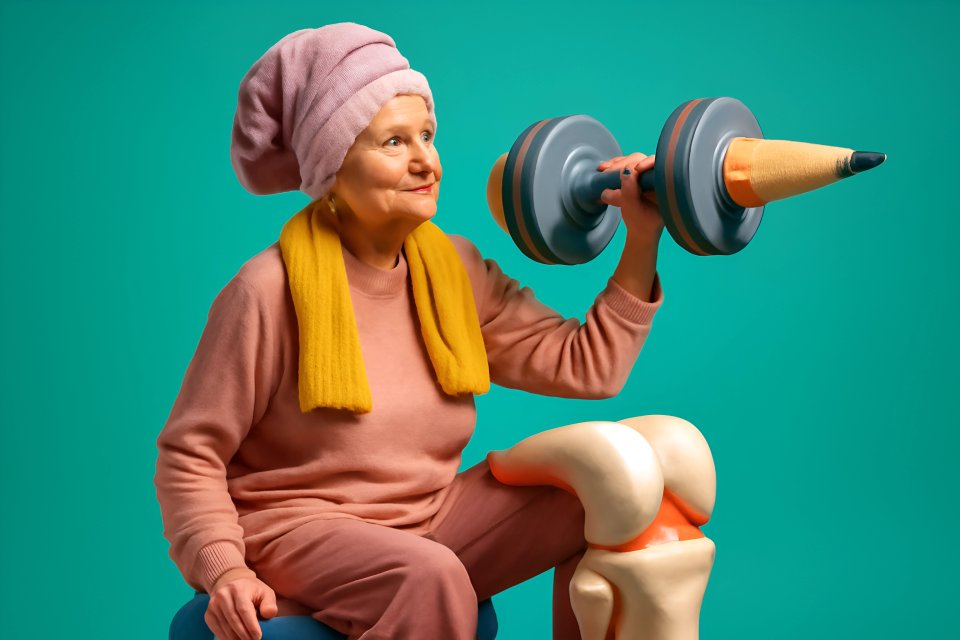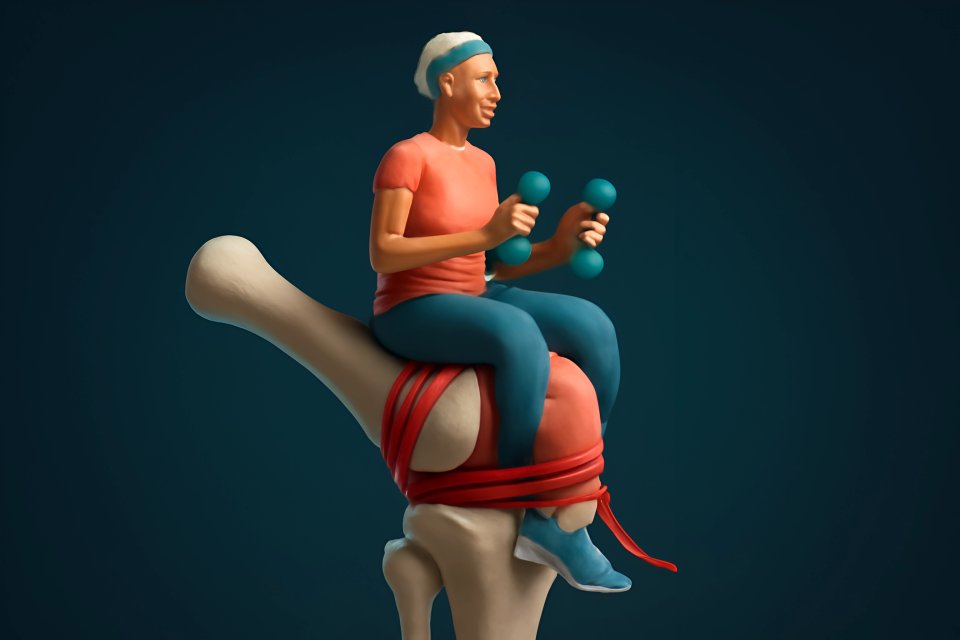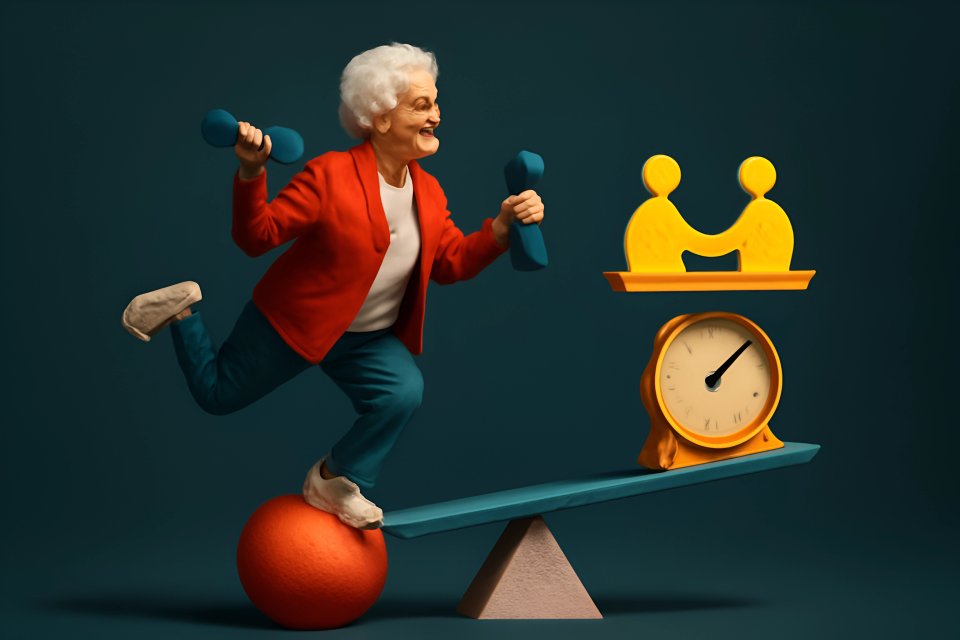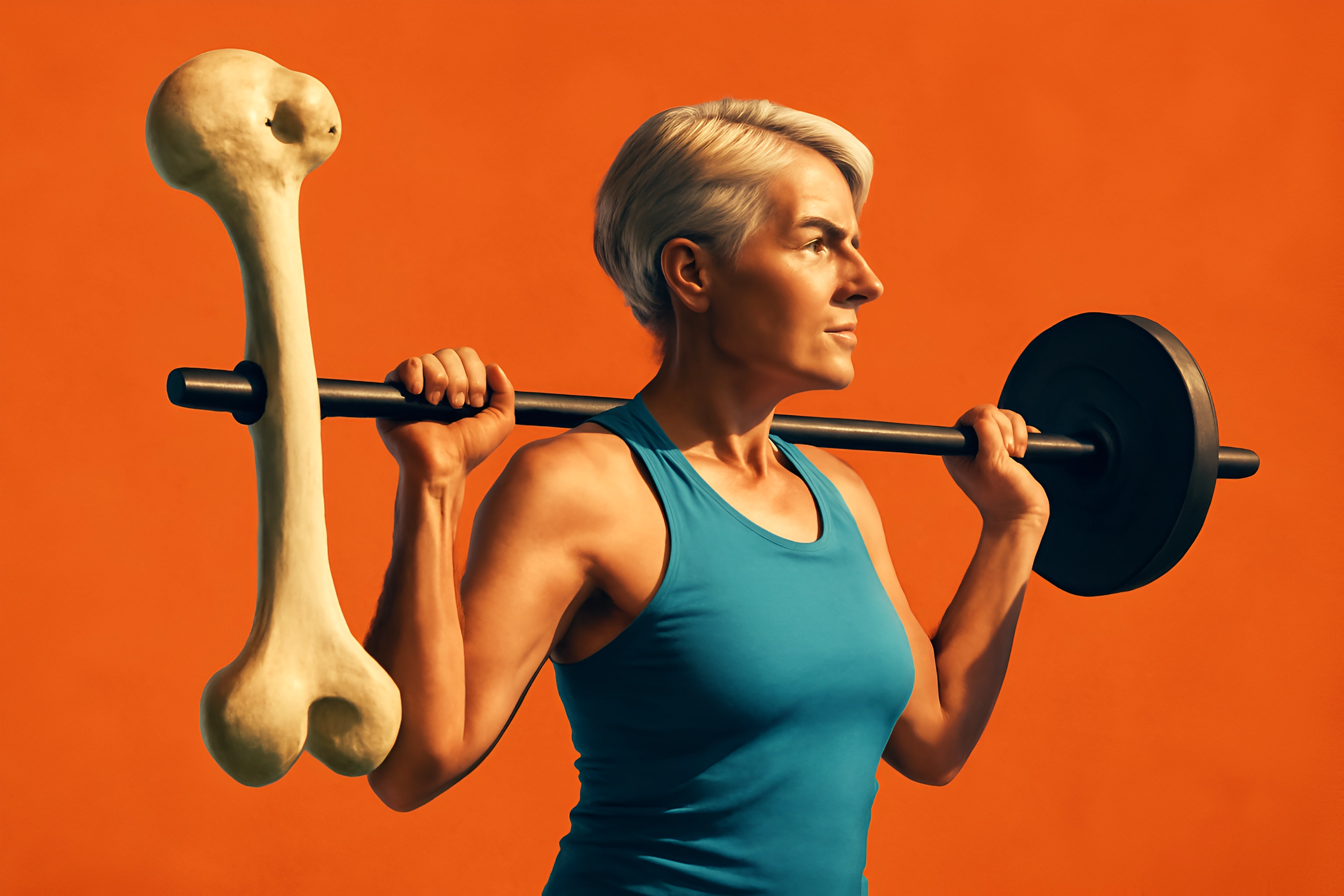
Reclaim Your Strength, Reignite Your Vitality
Did you ever look in the mirror and wonder where the time went? One day you’re full of boundless energy, and the next, you notice your metabolism has slowed to a crawl, and you’re thinking more about the health of your bones than you ever have before. You’re not alone in this feeling, and more importantly, you are not powerless against it.
The secret weapon isn’t some miracle pill or complicated fitness fad. It’s something primal, powerful, and proven: strength training. Forget the images of intimidating gyms and muscle-bound bodybuilders; this is about reclaiming your body’s natural strength to build a future filled with more energy, confidence, and freedom. This is your guide to understanding why strength training is your best friend after 50, how to start safely, and the exact foundational movements that will change your life.
It’s never too late to get stronger, and we're here to show you how to do it safely and effectively. By the end of this article, you will have a clear blueprint for building a stronger, more resilient body. You will feel empowered to take control of your health, one simple, powerful movement at a time.
The "Why": How Strength Training Becomes Your Best Friend After 50
Understanding the profound benefits of strength training is the first step toward making it a non-negotiable part of your life. It’s not just about looking better; it’s about living better, with more vitality and independence for decades to come. This is the science-backed truth about what happens when you start lifting.
The Bone Density Connection
Think of your skeleton as a structure that responds to demand. When you place your bones under the gentle stress of resistance exercise, you send a powerful "wake-up call" to your bone-forming cells. This process, known as osteogenesis, signals your body to deposit new minerals and reinforce its framework, particularly in vulnerable areas like your hips and spine. According to Prevention Magazine, this stimulation is crucial because after age 30, we can lose 3-5% of our muscle mass per decade, a process that directly impacts bone health.
This isn't just a minor benefit; it's a critical defense against osteoporosis and life-altering fractures. Every squat and every row you perform is a direct investment in a stronger, more resilient skeleton. For a complete wellness plan, consider exploring holistic approaches to bone health that combine nutrition and mindfulness with your new exercise routine.
The mechanical load from weight-bearing exercises is one of the most effective ways to tell your body that your bones need to stay strong and dense. This is a proactive step you can take today to safeguard your mobility and independence for all your tomorrows. You are literally building a stronger foundation for your future.
Firing Up Your Metabolic Engine
Have you noticed that it’s harder to manage your weight now than it was in your 20s or 30s? A primary reason is the natural loss of muscle mass that comes with age. Muscle is your body's metabolic engine; it's an active tissue that burns calories even when you're sitting still.
When you engage in strength training over 50 for bone density, you are not just building strength; you are building more of this calorie-burning tissue. Research from Human Kinetics shows that adults between 50 and 90 can rebuild 3-4 pounds of muscle after just a few months of consistent training. More muscle means a higher resting metabolism, making it easier to maintain a healthy weight and boosting your overall energy levels throughout the day.
This metabolic boost is a game-changer for long-term health and vitality. It helps improve your body's insulin sensitivity and gives you the sustained energy you need to enjoy your life to the fullest. To learn more, discover our practical tips for boosting metabolism with daily activities to complement your new workout routine.
The Bonus Benefits
The incredible advantages of strength training don't stop with bones and metabolism. A consistent routine dramatically improves your balance and stability, which is your number one defense against falls. A study from Penn State University found that older adults who strength-trained twice a week had significantly lower odds of mortality, linking it to a longer, healthier life.
Furthermore, strengthening the muscles around your joints provides better support and can alleviate the stiffness associated with arthritis. And let's not forget the powerful mental and emotional benefits. The release of endorphins during a workout can significantly boost your mood, reduce symptoms of anxiety and depression, and improve cognitive function.
This is about enhancing your entire quality of life. By building physical strength, you are also building mental resilience and the functional capacity to do the things you love. To see how this strength applies to your daily life, check out our guide on functional fitness for over 50.
Safety First: Your Pre-Workout Checklist
Embarking on a new fitness journey is exciting, but doing it safely is what guarantees long-term success. For adults over 50, prioritizing safety isn't just a good idea—it's the most important rule. Following these four simple steps will build your confidence and protect your body as you get stronger.
Consult Your Doctor
This is your non-negotiable first step. Before you lift a single weight or try a new exercise, have a conversation with your doctor or a physical therapist. This is especially critical if you have pre-existing conditions like osteoporosis, arthritis, heart disease, or high blood pressure. They can provide personalized advice and clear you for exercise, ensuring you start your journey on the safest possible footing.
Master the Warm-Up
Never jump straight into your workout. A proper warm-up is essential for preparing your body for the work ahead. Spend 5-10 minutes on dynamic stretches like arm circles, leg swings, torso twists, and walking in place to increase blood flow to your muscles and lubricate your joints. This simple routine makes your muscles more pliable and significantly reduces your risk of injury.
Form Over Everything
Here is one of the most important senior weight training tips you will ever receive: perfect form with a lighter weight is infinitely better than sloppy form with a heavy one. Your goal is to move well first, then add weight later. Focus on slow, controlled movements, feeling the target muscles engage. If you're unsure about your form, watch videos, or even consider a session with a qualified trainer to learn the basics.
Listen to Your Body
The old mantra of "no pain, no gain" does not apply here. It's crucial to learn the difference between the satisfying burn of muscle fatigue and the sharp, stabbing pain of a joint or ligament issue. Muscle soreness after a workout is normal, but if you feel any sharp or persistent pain during an exercise, stop immediately. Honoring your body's signals is a sign of strength, not weakness. For more guidance, explore our practical strength training modifications for seniors with joint pain.
The Foundational Five: Your Blueprint for a Stronger Body
You don't need complex machines or dozens of exercises to build a strong, resilient body. These five foundational movements are some of the most safe strength exercises for seniors and form the perfect blueprint for your success. They target major muscle groups, mimic everyday movements, and can be modified for any fitness level. To get started, explore our guide on how to start adaptive home workouts.
The Chair Squat
Why It’s Great for You
This is the single most important exercise for maintaining independence. It builds strength in your legs, glutes, and core, which is essential for everything from getting out of a chair to walking up stairs.
Step-by-Step Instructions
- Stand in front of a sturdy chair with your feet shoulder-width apart.
- Keeping your chest up and back straight, hinge at your hips and bend your knees to slowly lower yourself until you gently tap the chair.
- Without fully sitting, push through your heels to return to the starting position.
Modifications
- Beginner: Hold onto a countertop or sturdy table for balance.
- Intermediate/Advanced: Remove the chair and perform a full bodyweight squat. To progress further, hold a single dumbbell at your chest (Goblet Squat).
Wall Push-Ups
Why It’s Great for You
This exercise safely builds strength in your chest, shoulders, and arms without putting stress on your wrists or lower back. It's a fantastic starting point for developing upper-body strength.
Step-by-Step Instructions
- Stand facing a wall, about arm's length away.
- Place your palms on the wall, slightly wider than your shoulders.
- Keeping your body in a straight line from head to heels, bend your elbows and lean your chest toward the wall.
- Push back to the starting position.
Modifications
- Beginner: Stand closer to the wall to make it easier.
- Intermediate/Advanced: Progress to incline push-ups on a kitchen counter, then a sturdy bench or coffee table.
Resistance Band Rows
Why It’s Great for You
Modern life often has us hunched over desks and phones, weakening our back muscles. Rows are the perfect antidote, strengthening your upper back to improve posture and support your spine.
Step-by-Step Instructions
- Sit on the floor with your legs extended (or in a chair). Loop a resistance band around the soles of your feet.
- Hold the ends of the band with both hands, palms facing each other. Sit up tall with a straight back.
- Squeeze your shoulder blades together as you pull the band toward your torso.
- Slowly release back to the starting position.
Modifications
- Beginner: Use a lighter resistance band.
- Intermediate/Advanced: Use a heavier band or progress to single-arm dumbbell rows with one knee on a bench.
Glute Bridges
Why It’s Great for You
Strong glutes are essential for protecting your lower back and improving hip stability. This exercise activates these powerful muscles, which often become dormant from too much sitting.
Step-by-Step Instructions
- Lie on your back with your knees bent, feet flat on the floor hip-width apart, and arms by your sides.
- Squeeze your glutes and lift your hips off the floor until your body forms a straight line from your shoulders to your knees.
- Hold for a moment at the top, then slowly lower your hips back down.
Modifications
- Beginner: Only lift your hips a few inches off the floor.
- Intermediate/Advanced: Progress to a single-leg glute bridge or place a light dumbbell across your hips for added resistance.
Farmer's Walks
Why It’s Great for You
This is a powerhouse full-body exercise. It builds grip strength (which is linked to longevity), challenges your core stability, improves posture, and is a fantastic weight-bearing activity for bone density.
Step-by-Step Instructions
- Stand tall with a weight in each hand (dumbbells, kettlebells, or even grocery bags).
- Keep your shoulders back and down, your chest up, and your core engaged.
- Walk forward for a set distance or time, taking small, controlled steps.
- Turn around and walk back.
Modifications
- Beginner: Start with very light weights (3-5 lbs) and walk for a short distance (20-30 feet).
- Intermediate/Advanced: Increase the weight of the dumbbells or the distance you walk.
Fueling Your Progress: Simple Nutrition for Muscle and Bone
Exercise is only one part of the equation. To truly build stronger muscles and bones, you need to provide your body with the right nutritional building blocks. Think of food as the raw material your body uses to repair and rebuild itself after each workout.
Protein Power
Protein is the essential nutrient for muscle repair and growth. After a strength training session, your muscles need protein to heal the tiny micro-tears created during exercise, which is how they grow stronger. Aim to include a source of protein with each meal, focusing on simple, whole foods like Greek yogurt, eggs, chicken, fish, beans, and lentils. For ideas, check out these balanced breakfasts for seniors designed to fuel your active lifestyle.
The Bone-Building Duo
Calcium and Vitamin D work together to keep your bones strong and dense. Calcium is the primary mineral that makes up your bone structure, while Vitamin D helps your body absorb it effectively. Ensure you're getting enough of both through foods like dairy products (milk, cheese, yogurt), leafy greens (spinach, kale), fortified foods, and safe sun exposure for Vitamin D.
Putting It All Together: Your Weekly Plan
Consistency is the key to seeing real, lasting results. A simple, structured plan removes the guesswork and helps you build a sustainable habit. Here’s how to put the Foundational Five exercises into a weekly routine.
Frequency
Your muscles need time to recover and grow stronger. For this reason, you should aim to perform your strength workout on 2-3 non-consecutive days per week. For example, you could choose Monday and Thursday, or Tuesday, Thursday, and Saturday.
Structure
For each of the five exercises, perform 2-3 sets of 8-12 repetitions. This range is ideal for building both muscle strength and endurance. Rest for about 60-90 seconds between each set to allow your muscles to recover before the next one.
| Day | Activity |
|---|---|
| Day 1 | Strength Workout (Foundational Five: 2-3 sets of 8-12 reps) |
| Day 2 | Rest or Active Recovery (e.g., walking, stretching) |
| Day 3 | Strength Workout (Foundational Five: 2-3 sets of 8-12 reps) |
| Day 4 | Rest or Active Recovery (e.g., walking, stretching) |
| Day 5 | Optional 3rd Strength Workout or other activity (e.g., swimming, yoga) |
| Day 6 | Rest or Active Recovery |
| Day 7 | Rest |
The Power of Rest
Remember, your muscles don't get stronger during your workout; they get stronger during the recovery period afterward. Rest days are just as important as training days. This is when your body does the crucial work of repairing muscle tissue and replenishing its energy stores. To create a more holistic routine, learn about combining resistance and flexibility for a balanced program.
Your Journey to a Stronger You Starts Now
You now have the knowledge and the tools to begin one of the most rewarding journeys of your life. We've shown you that strength training is not only safe and accessible after 50, but it is the single most powerful tool you have to build bone density, fire up your metabolism, and safeguard your independence for years to come. The path forward is not about drastic changes overnight; it's about taking one small, consistent step at a time.
Strength isn't about age; it's about action. By performing a simple chair squat or taking a farmer's walk across your living room, you are making a profound investment in a future filled with more energy, confidence, and freedom. You are taking control.
What's one strength goal you have for yourself this month? Share it in the comments below—we'd love to cheer you on!
FAQ Section
How much weight should I start with?
Start with just your body weight. The goal is to master the form first. Once you can comfortably perform 12-15 repetitions of an exercise with perfect technique, you can consider adding light weights (e.g., 3-5 lbs) and gradually increasing from there as you get stronger.
Is it safe to lift weights if I already have osteoporosis?
It can be highly beneficial, but it is absolutely essential to get clearance and specific guidance from your doctor or a physical therapist first. They can advise on which movements are safe for you and which ones to avoid to ensure you are strengthening your body without risk.
What if I don't have any equipment?
No problem! You can achieve fantastic results by starting with the bodyweight and wall-based exercises in this guide, like Chair Squats and Wall Push-Ups. When you're ready to progress, resistance bands are an inexpensive and incredibly versatile tool for effective home workouts.






